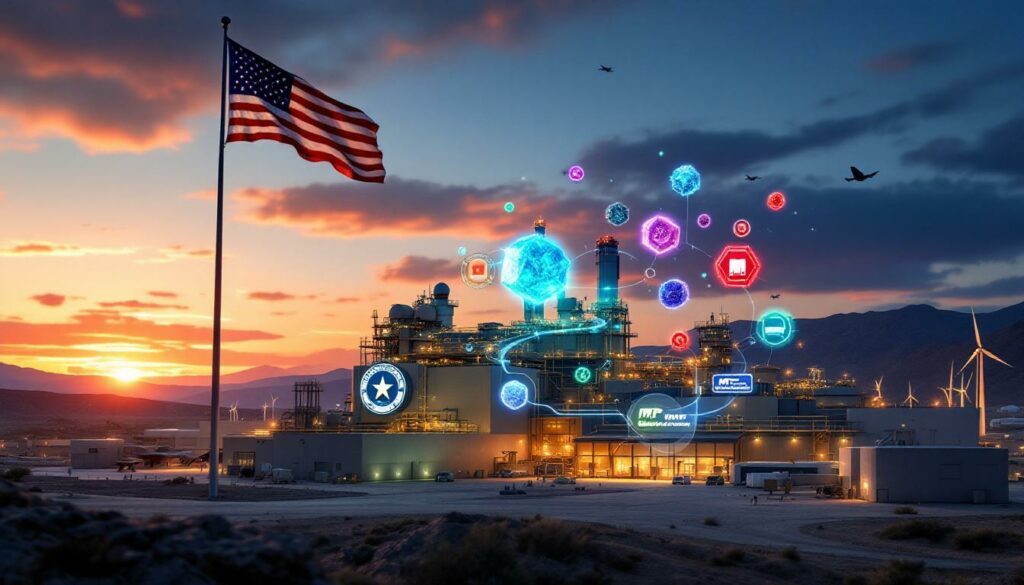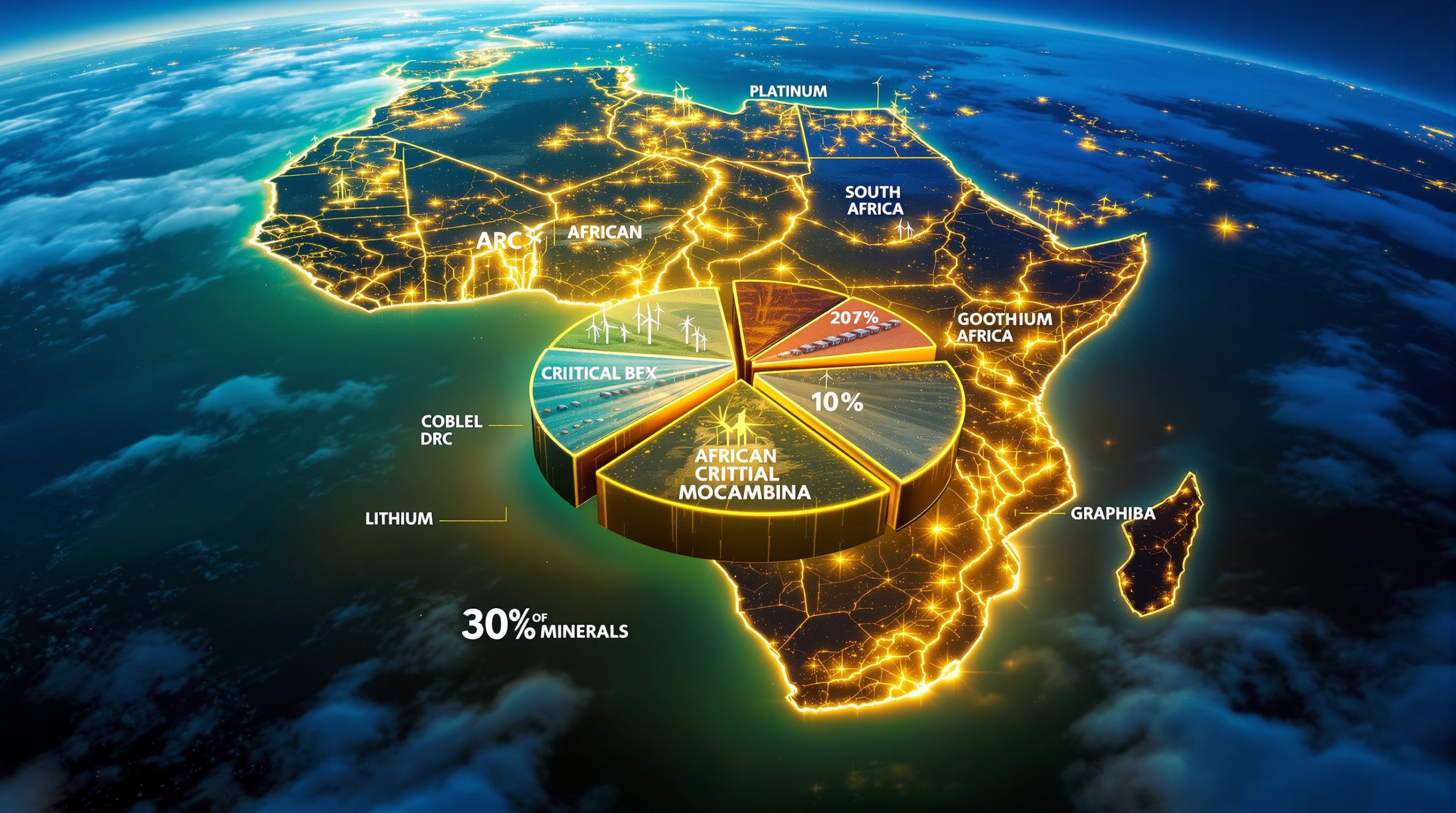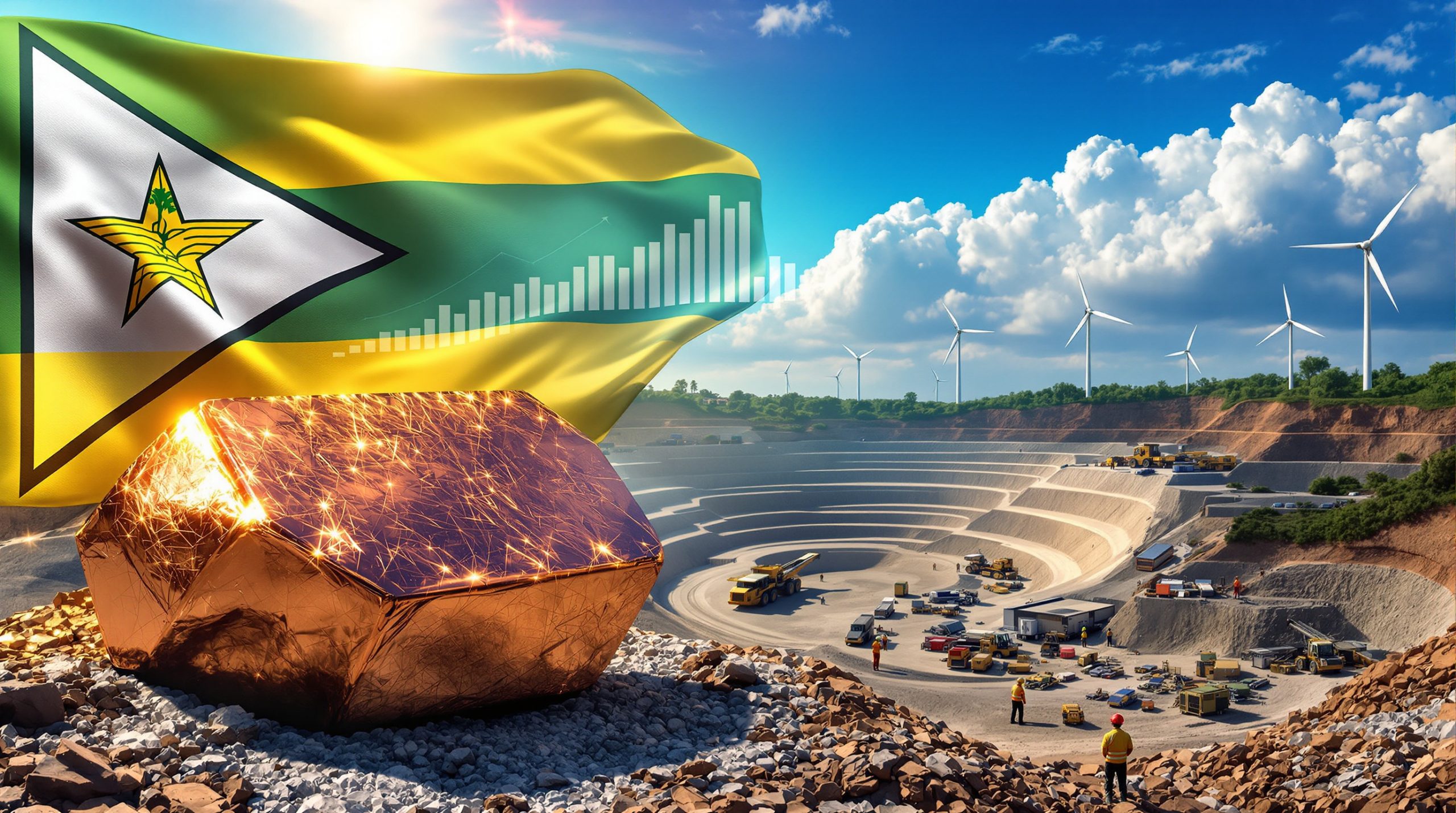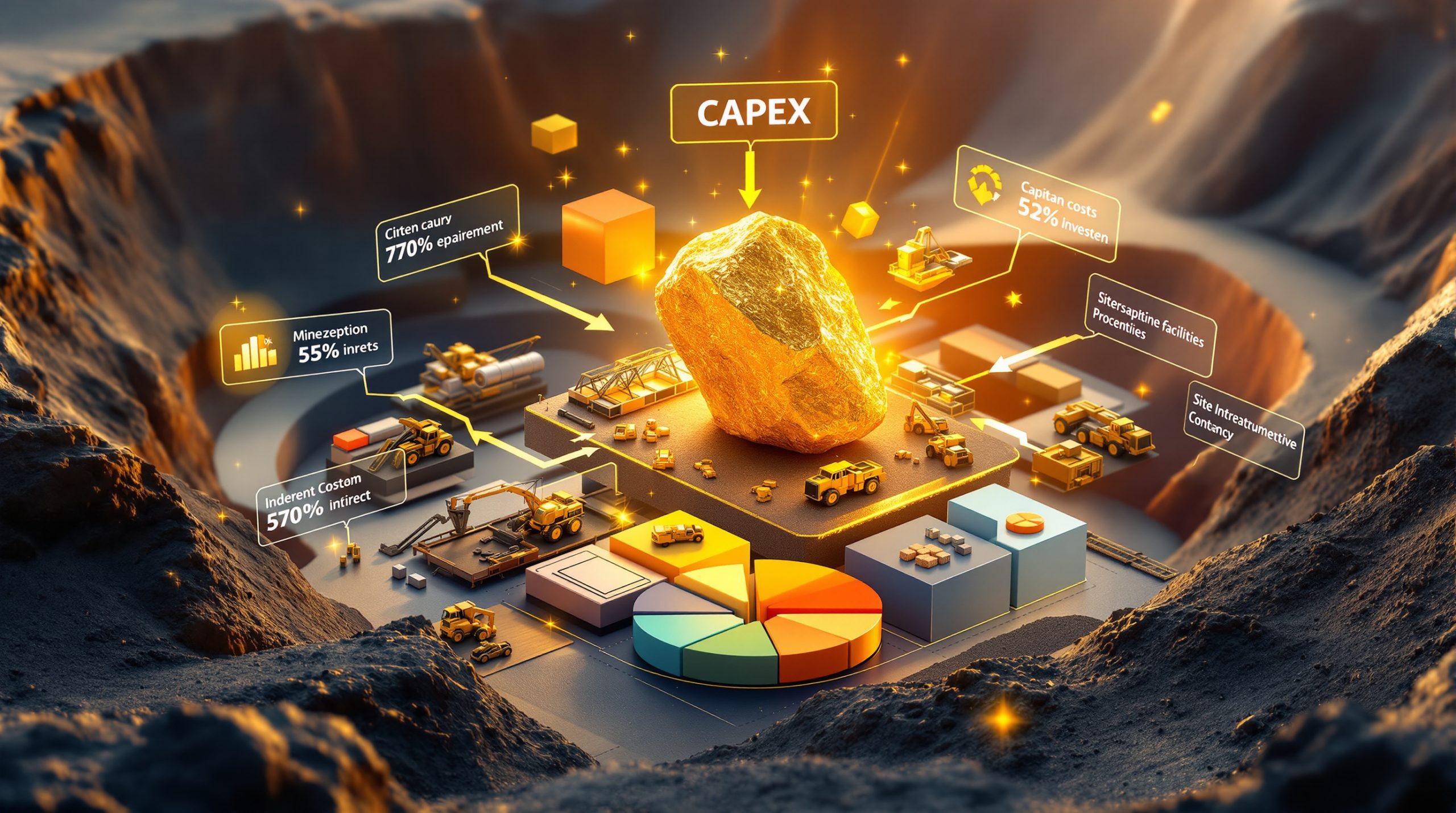What is the Strategic Significance of the DoD-MP Materials Partnership?
The Department of Defense and MP Materials $400 million government-backed loan represents a watershed moment in America's strategic minerals policy. This unprecedented investment, announced July 15, 2025, targets the development of domestic permanent magnet manufacturing capabilities—directly addressing one of the most critical vulnerabilities in America's defense and technology supply chains.
"This deal that the DoD just did with MP Materials is just a foreshadowing of what is happening in this space," notes Dr. Nomi Prins, highlighting the transformative potential of this partnership (Money Level Show, 2025).
The investment signals a dramatic shift in U.S. industrial policy, moving from globalized supply chains toward strategic resource security. With China controlling approximately 90% of global rare earth processing capacity, the loan establishes the foundation for America's mineral independence at a time of increasing geopolitical tension.
Understanding the $400 Million Government-Backed Loan
The Department of Defense's $400 million loan to MP Materials specifically targets the creation of permanent magnet processing capacity at the company's Mountain Pass facility in California. This represents one of the largest federal investments in domestic rare earth capabilities in American history.
Key aspects of the loan include:
- Favorable terms: 2% interest over 30 years (compared to commercial rates of 7%)
- Processing focus: Converting raw materials into high-value magnetic materials
- Technological transfer: Building domestic expertise in specialized separation techniques
- Supply chain security: Creating the first fully integrated U.S.-based rare earth supply chain
The investment reflects growing recognition that rare earth processing—not just mining—represents the critical vulnerability in America's supply chain. China's dominance in this space stems largely from decades of investment in separation technology, which the MP Materials partnership aims to overcome.
The National Security Imperative
The strategic importance of this partnership extends far beyond commercial considerations. Permanent magnets containing rare earth elements are essential components in numerous defense systems, including:
- F-35 fighter jets (requiring 920 lbs of rare earths per unit)
- Precision-guided munitions and missile guidance systems
- Naval propulsion systems
- Satellite communications
- Night vision equipment and battlefield electronics
"China controls about 90% of rare earth processing in the world," explains Dr. Prins. "This creates enormous leverage that could be weaponized during geopolitical tensions."
The 2010 rare earth export embargo against Japan during territorial disputes served as a wake-up call for Western nations, demonstrating how mineral dependencies create strategic vulnerabilities. The MP Materials loan represents a direct response to this reality, establishing domestic production capacity for defense-critical materials.
Why Are Rare Earth Elements So Critical to Modern Technology?
Despite their name, rare earth elements aren't particularly rare in the Earth's crust. What makes them special—and strategically vital—is their unique electron configuration that enables unmatched magnetic, luminescent, and electrochemical properties.
These 17 elements (the lanthanide series plus scandium and yttrium) have become indispensable to modern technology, enabling miniaturization, energy efficiency, and performance characteristics that cannot be replicated with substitutes.
The Hidden Minerals in Everyday Devices
The average smartphone contains approximately 0.5 grams of rare earth elements, according to ACS Sustainable Chemistry & Engineering (2022). While this may seem insignificant, it represents extraordinary technological concentration in devices billions of people carry daily.
These minerals enable:
- Miniature speakers and microphones (neodymium magnets)
- Vibrant display colors (europium, terbium, yttrium)
- Camera lenses and glass polishing (cerium, lanthanum)
- Touchscreen functionality (indium tin oxide, which requires rare earth processing)
"Everybody carries a bunch of rare earth in their pocket every day," notes Dr. Prins, highlighting the ubiquity of these elements in consumer technology.
What makes rare earths particularly challenging is their chemical similarity, which makes separation difficult and expensive. China's decades-long investment in solvent extraction techniques has given it a commanding lead in processing technology.
Applications Across Strategic Industries
Beyond consumer electronics, rare earth elements play critical roles across multiple strategic sectors:
-
Renewable energy: A single 3MW wind turbine requires approximately 2 tons of rare earth magnets. Wind turbine magnets account for 30% of global neodymium demand (IEA, 2024).
-
Electric vehicles: Tesla's drive motors use 2kg of rare earth elements per vehicle. The transition to EVs is expected to increase rare earth demand by 300% by 2030 (Tesla Impact Report, 2023).
-
Medical equipment: MRI machines require substantial amounts of rare earth elements for their superconducting magnets (10-15kg per machine).
-
Defense applications: From targeting systems to communications equipment, rare earths enable modern warfare capabilities. The F-35 fighter program alone represents a significant demand driver for rare earth materials.
This widespread dependence makes rare earth supply chain security a matter of both economic competitiveness and national security. The focus on critical minerals energy has intensified as countries worldwide compete for resources.
How Does China Dominate the Global Rare Earth Market?
China's commanding position in rare earths didn't happen by accident. Beginning in the 1980s, the Chinese government identified rare earths as a strategic sector and implemented a comprehensive development strategy that has led to its current dominance.
China's Processing Monopoly
The most significant aspect of China's rare earth dominance isn't mining (though China produced 240,000 tons in 2023, accounting for 85% of global output), but rather processing—the critical middle step that transforms raw materials into usable components.
China controls:
- 90% of global rare earth processing capacity
- 98% of heavy rare earth processing (dysprosium, terbium, etc.)
- 85% of permanent magnet manufacturing
This dominance stems from China's long-term investment in separation technology through institutions like the Baotou Rare Earth Research Institute, which pioneered acid-leach solvent extraction techniques that reduced processing costs by 40% compared to Western methods.
As Dr. Prins notes, "The processing step is where the real value and strategic advantage lies." China's expertise in separating individual rare earth elements—which are chemically similar and difficult to isolate—represents a technological edge that has taken decades to develop.
The Geopolitical Leverage
China's control of rare earth processing provides significant economic and political leverage on the global stage. The most notable demonstration came in 2010, when China restricted rare earth exports to Japan during a territorial dispute over the Senkaku/Diaoyu Islands.
This action sent shockwaves through global supply chains and highlighted the vulnerability of nations dependent on Chinese rare earth processing. More recently, China's 2023 restrictions on gallium and germanium exports signaled that rare earths could potentially be leveraged in future disputes.
The strategic implications are substantial:
- Defense vulnerability: U.S. weapons systems dependent on Chinese-processed materials
- Economic leverage: Ability to influence technology pricing and availability
- Innovation constraints: Control over materials needed for emerging technologies
- Policy influence: Subtle pressure on countries to align with Chinese interests
While Western nations have recognized this vulnerability, developing alternatives has proven challenging due to the technical complexity of rare earth processing and China's established cost advantages.
The US mineral production order alongside the MP Materials loan represents the most significant U.S. effort to date to break this dependency by establishing domestic processing capability.
What Makes MP Materials a Strategic Asset for the United States?
MP Materials stands as the cornerstone of America's rare earth strategy, operating the only major rare earth mining facility in the United States and working to establish the country's first integrated mine-to-magnets supply chain.
America's Premier Rare Earth Operation
The Mountain Pass mine in California, operated by MP Materials, represents a unique national asset:
- Historical significance: Once the world's leading rare earth producer before Chinese competition forced closure in the early 2000s
- Resource quality: High concentration of light rare earths (particularly neodymium and praseodymium) essential for permanent magnets
- Production capacity: Currently supplies 15% of global rare earth concentrates
- Environmental standards: Operates under strict U.S. regulations, contrasting with some international operations
MP Materials has established itself as the leading Western producer of rare earth concentrates, producing approximately 45,000 tons of rare earth oxide equivalent annually. However, prior to the DoD loan, the company was forced to ship concentrates to China for processing—creating a critical supply chain vulnerability.
"The absence of domestic processing capacity has been the Achilles' heel of U.S. rare earth strategy," explains MP Materials' CEO in a June 2025 interview with S&P Global. "Mining without processing is like growing wheat without the ability to make flour."
Building Domestic Processing Capability
The Department of Defense and MP Materials $400 million government-backed loan specifically targets the development of processing facilities at Mountain Pass, creating the missing link in America's rare earth supply chain:
- Stage 1 (Complete): Mining and concentration of rare earth materials
- Stage 2 (Partial): Separation of individual rare earth elements
- Stage 3 (Funded by DoD loan): Conversion to permanent magnets
This vertical integration will transform MP Materials from a mining company into a fully integrated materials producer capable of supplying finished components to defense contractors and technology manufacturers.
Key technical aspects include:
- Processing capacity: Planned 50,000 tons/year of magnet production by 2030
- Environmental innovation: MP's "Zero Waste" initiative recovers 99% of process water
- Process efficiency: Vertical integration expected to slash processing time from 60 days to 14
The completed facility will represent America's first domestic capability to transform rare earth materials into high-value products without Chinese involvement—a critical step toward supply chain security.
How Does This Initiative Fit Into Broader US Industrial Policy?
The MP Materials partnership represents one element of a comprehensive shift in U.S. industrial policy toward securing domestic supply chains for critical minerals. This strategic pivot spans administrations and enjoys rare bipartisan support.
The Shift Toward Strategic Resource Security
After decades of globalizing supply chains based primarily on cost considerations, U.S. policy has evolved to prioritize security and resilience for strategic materials:
- 2017: Presidential Executive Order 13817 identifying critical minerals
- 2020: Executive Order 13953 declaring rare earth emergency
- 2022: Defense Production Act invoked for battery minerals
- 2023: Inflation Reduction Act domestic content requirements
- 2025: $400 million DoD loan to MP Materials
This evolution reflects growing recognition that mineral security underpins both economic prosperity and national defense capabilities. The shift encompasses:
- Section 232 investigations: Examining mineral imports for national security implications
- Domestic content requirements: Incentivizing U.S.-based production
- Strategic stockpiling: Building reserves of critical materials
- R&D investments: Developing processing technologies and substitutes
The Trump administration's critical minerals order established much of the groundwork for these developments, signaling bipartisan recognition of the issue's importance.
"This comprehensive approach to mineral security addresses vulnerabilities across multiple commodities," notes Dr. Prins, highlighting the systematic nature of recent policy changes.
Parallels With Other Critical Mineral Initiatives
The MP Materials partnership has direct parallels with other recent mineral security initiatives:
-
Copper: The White House recently concluded a Section 232 investigation into copper imports, potentially leading to 50% tariffs. This follows recognition of copper's critical role in electrification and defense applications.
-
Uranium: $1.7 billion allocated in the 2024 National Defense Authorization Act for domestic uranium enrichment to secure nuclear fuel supply chains.
-
Lithium: Loan guarantees and permitting assistance for domestic lithium production to support electric vehicle manufacturing.
-
Silver: Growing recognition of silver's dual role as both precious metal and industrial input for solar panels and electronics.
These parallel efforts demonstrate a comprehensive approach to mineral security that spans the periodic table of elements critical to modern technology and defense systems.
What Are the Investment Implications of the Rare Earth Focus?
The strategic minerals focus creates distinctive investment dynamics across multiple commodities, with government support providing both stability and growth potential in previously overlooked sectors.
The Rare Earth Investment Landscape
MP Materials (NYSE: MP) represents one of the few pure-play rare earth investments available to U.S. investors. The Department of Defense and MP Materials $400 million government-backed loan announcement on July 15, 2025, drove a 12% single-day gain in the company's stock price, reflecting the market's recognition of reduced operational and financial risks.
Investment considerations for MP Materials include:
- Government backing: The $400 million loan substantially reduces financing risk
- Favorable terms: 2% interest over 30 years compared to commercial rates of 7%
- Vertical integration: Higher margins from processing vs. mining alone
- Strategic importance: Reduced regulatory risks due to national security designation
"MP Materials represents one of the few pure-play rare earth investments with significantly reduced risk due to government backing," notes Dr. Prins, highlighting the unique position of the company in the U.S. market.
The rare earth sector more broadly presents challenges for investors due to limited public companies with primary exposure to this space. Alternative approaches include:
- Equipment suppliers: Companies providing processing technology
- End users: Defense contractors and EV manufacturers
- Diversified miners: Companies with some rare earth exposure among broader operations
For investors seeking diversification, an ETC investment guide can provide broader exposure to the commodity space.
Broader Commodity Investment Considerations
Beyond rare earths, other strategic minerals show compelling investment fundamentals:
Gold: Central bank purchasing reached record levels in 2024, driving gold prices record highs. Gold has outperformed even high-flying tech stocks, gaining 43% year-to-date compared to Nvidia's 31%.
"Gold could potentially reach $4,000 per ounce by year-end 2025," projects Dr. Prins, noting the current consolidation around $3,300 represents a temporary pause in the uptrend.
Silver: Dual demand from industrial applications (particularly solar) and investment interest positions silver for significant appreciation. Price projections suggest silver could exceed $40 per ounce by year-end with potential to reach $50-60 in 2026.
Copper: White House investigations into copper as a critical defense mineral and potential 50% tariffs highlight copper's strategic importance. Prices recently exceeded $5.50 per pound, reflecting tight supply fundamentals.
Uranium: Supply constraints coupled with growing nuclear energy demand create compelling fundamentals. The Sprott Physical Uranium Trust (SRUUF) rose 90% in 2024 alone.
These strategic minerals share common characteristics that differentiate them from traditional commodities:
- Supply constraints: Development timelines measured in years
- Critical applications: Non-substitutable roles in key technologies
- Strategic designation: Government support and investment
- Dual-use nature: Both commercial and defense applications
How Does Central Bank Activity Influence Precious Metals Markets?
Central bank purchasing has emerged as one of the most significant drivers of precious metals markets, with implications that extend to broader strategic minerals policy.
Record Gold Purchasing Trends
Central banks worldwide have dramatically increased their gold reserves, purchasing a record 1,136 tons in 2023 and on pace to exceed that figure in 2024. This represents a fundamental shift in international monetary relationships.
Key aspects of this trend include:
- Diversification from dollars: Reducing exposure to U.S. currency and policy
- BRICS nations leading: China, Russia, India, and Brazil among top purchasers
- Smaller nations joining: Poland, Turkey, and numerous emerging economies
- Physical delivery emphasis: Preference for direct custody vs. paper claims
"Central banks are voting with their reserves," explains Dr. Prins. "This shift represents a hedge against both inflation and geopolitical uncertainty."
The purchasing trend provides fundamental support for gold prices by removing physical supply from the market. With mining output relatively stable, central bank demand directly impacts available supply for industrial and investment purposes.
Projected Price Movements in Precious Metals
This fundamental support has driven significant price appreciation in precious metals, with further gains projected:
Gold: After consolidating around $3,300 per ounce, gold appears positioned for another leg higher.
- Year-end 2025 target: $4,000 per ounce
- 2026 potential: $5,000+ per ounce
- Key drivers: Continued central bank purchasing, geopolitical tensions, and anticipated Federal Reserve easing
Silver: Industrial demand coupled with investment interest creates a compelling case for silver appreciation.
- Year-end target: Exceeding $40 per ounce
- 2026 potential: $50-60 per ounce range
- Performance: Both gold and silver have outperformed major tech stocks year-to-date
These price projections reflect both monetary factors (central bank activity, interest rate expectations) and industrial demand for precious metals in technology applications—creating a unique combination of investment and strategic considerations.
What Supply Chain Challenges Affect Strategic Minerals?
The development of secure supply chains for strategic minerals faces numerous challenges beyond simply identifying and mining
Ready to Capitalize on the Next Major Mineral Discovery?
Discover actionable opportunities in the ASX mining sector with Discovery Alert's proprietary Discovery IQ model, delivering real-time alerts on significant mineral discoveries before the broader market reacts. Explore how historic discoveries have generated substantial returns by visiting our dedicated discoveries page and begin your 30-day free trial today.




